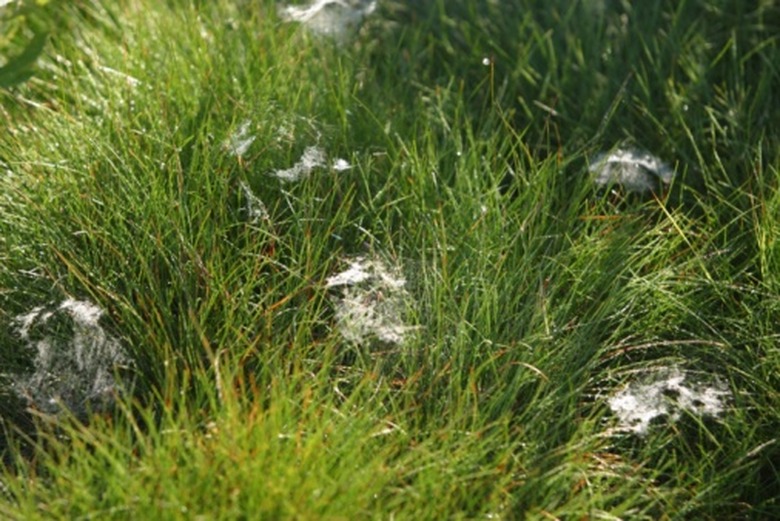Spider Webs & Grass
Spider webs often appear overnight on a lawn. The grass spider, also called the funnel spider (Agelenopsis naevia), constructs a fine sheet-like web across the surface of the grass blades. One spider left undisturbed will create a web that measures over 1 yard. Within the middle of the web sits a small funnel the spider uses for hiding.
Web and Hunting
The web of the grass spider does not have a sticky surface, unlike other spider webs. The grass spider hides within the confines of its funnel until it feels a vibration that indicates an unsuspecting victim has wandered onto the surface of its web. Exceptionally fast, the grass spider rushes out from its hiding place to attack the insect prey. The spider relies on the vibrations on the web to locate its prey because it has poor eyesight, according to Penn State College of Agricultural Science.
- Spider webs often appear overnight on a lawn.
- The web of the grass spider does not have a sticky surface, unlike other spider webs.
Benefits and Control
Highly beneficial, the grass spider helps control insect pests in the garden. The spiders rarely ever leave their webs until the winter months arrive. Once inclement weather occurs, the spider will sometimes seek refuge in the house. It can bite but does not have an aggressive nature. To discourage the spiders, regularly mow the grass and keep weeds cut short. Caulk all cracks or external areas where the spider can gain admittance into the house. Repair all window screens to keep the spider from seeking refuge inside the house during cold weather.
- Highly beneficial, the grass spider helps control insect pests in the garden.
- Caulk all cracks or external areas where the spider can gain admittance into the house.
Life Cycle
The grass spider usually lives only one year. In the autumn, the female grass spider deposits an egg sac somewhere within her web. When spring arrives, the eggs hatch and young spiders emerge. They molt their skin as they grow into adults and begin to build webs in the grass. The dainty webs become visible on the grass around May. The spiders appear brown with black, tan and gray markings. The female grass spider is slightly larger than the male.
- The grass spider usually lives only one year.
- The dainty webs become visible on the grass around May.
- The spiders appear brown with black, tan and gray markings.
Considerations
The grass spider also enjoys constructing its sheet-like web across ground covers such as ivy or pachysandra. It will also utilize a pile of leaves to build a web. The grass spider bears a striking resemblance to the poisonous brown recluse spider and the hobo spider.
